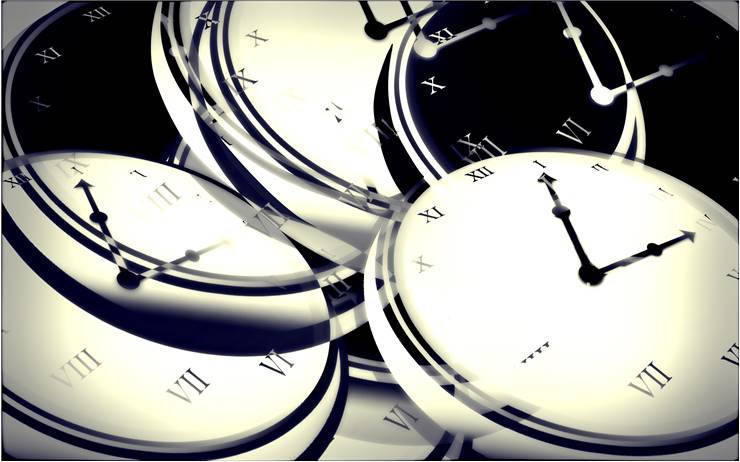Timeline of Clocks and Watches
- 3500 BC – First sundials build in ancient Egypt after they were imported from Babylon, with many ancient structures were built to mark the passage of time and determine arrival of planting seasons and harvest times.
- 2000 BC – Creation of Stonehenge.
- 1400 BC – Some cultures mark the passage of time by measuring time it takes to burn oil, incense and candles.
- 742 BC – First archeological proof of sun dial existence.
- 300 BC – First simple transmission gears created by Archimedes.
- 300 AD – Introduction of sand glass clocks.
- 885 – Candles with time markings introduced to the medieval Europe.
- 1092 – First mechanical water clock created by Chinese innovator Su Sung.
- 1368 – First mechanical clock makers appeared in England.
- 1490 – Locksmith Peter Hele invented first mainspring in Nurnburg.
- Early 1500s – Appearance of first small domestic (table) clocks.

- 1510 – First mechanical watch created in German cities of Nuremberg by Peter Henlein. These models were either fastened to belts or carried around the neck and they measured only passage of hours.
- 1530 – The oldest surviving mechanical clock.
- 1540 – Screws became used for clocks, enabling much smaller designs that kept time much better than first models.
- 1541 – First public tower clock fixed on one of the towers in Hampton Court Palace, England.
- 1577 - Jost Burgi invented the minute hand, even though 16th century clocks were very inaccurate.
- 1581 – Italian astronomer and physicist Galileo discovered the properties of pendulum.
- 1587 – Geneva became home to the thriving watchmaking industry.
- 1610 – Introduction of protection glass on watches. This finally enabled reliable protection of time dials on the portable small watches.
- 1635 – French inventor and clockmaker Paul Viet of Blois introduced first enamel dials.
- 1657 – Famous Dutch physicist Christiaan Huygens created first pendulum controlled clock.
- 1671 – Pendulum clocks received important upgrade with the introduction of pendulum suspension spring introduced by William Clement.
- 1676 – Famous London watchmaker Daniel Quare introduced to the public concentric minute hand for watches. He also worked on creating repeating watches.
- 1704 - Nicholas Facio managed to pierce rubies and sapphires, using them as a jeweled bearing for balance staff pivots.
- 1720s – Several important watch inventions - George Graham invented mercurial compensation pendulum and dead-beat escapement for clocks, John Harrison invented grid-iron compensation pendulum and George Graham invented the cylinder escapement.
- 1760s – Enlightenment era in Europe brought many advances to clock mechanisms. Need for accurate maritime chronometers soon enabled ordinary and cheap watches to become very accurate. This accuracy can be attributed to the inventions of Pierre Le Roy and Thomas Earnshaw who introduced to the public temperature compensated balance wheel.
- 1785 - Josiah Emery improved the design of lever escapement that was first introduced by Thomas Mudge in 1759.
- 1840 – First electric clock was created by Edinburgh clockmaker Alexander Bain.
- 1858 – Association of English clock and watch makers created the British Horological Institute.
- 1880 to 1884 – Standardization of time zones. England received GMT time zone with Greenwich becoming prime meridian for measuring longitude in entire world.
- 1895 – First modern electric clock created by Frank Hope-Jones. This clock became base of all modern clocks that are created today.
- 1900s – Clocks and personal watches enter into mass production.
- 1905 – Radio time signals became transmitted from Washington DC to help ships find longitude on open seas.
- 1916 – Introduction of Summer Time.
- 1945 – Physicist Isador was first to suggest that oscillations of atoms (atomic-beam magnetic resonance) can be used to create extremely precise clocks.
- 1949 – First atomic clock created by United States National Institute of Standards and Technology (NITS).
- 1967 – Second is formally defined not trough movements of celestial bodies but as 9,192,631,770 vibrations of the cesium atom.
- Late 1990s – Over half a billion watches are sold every year.
